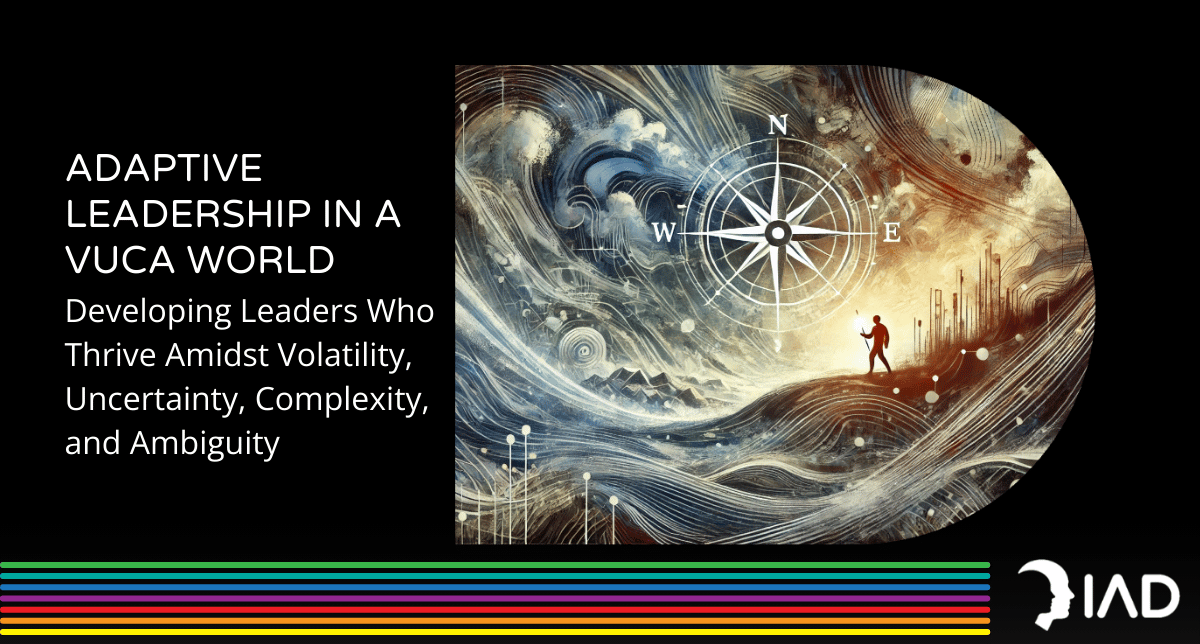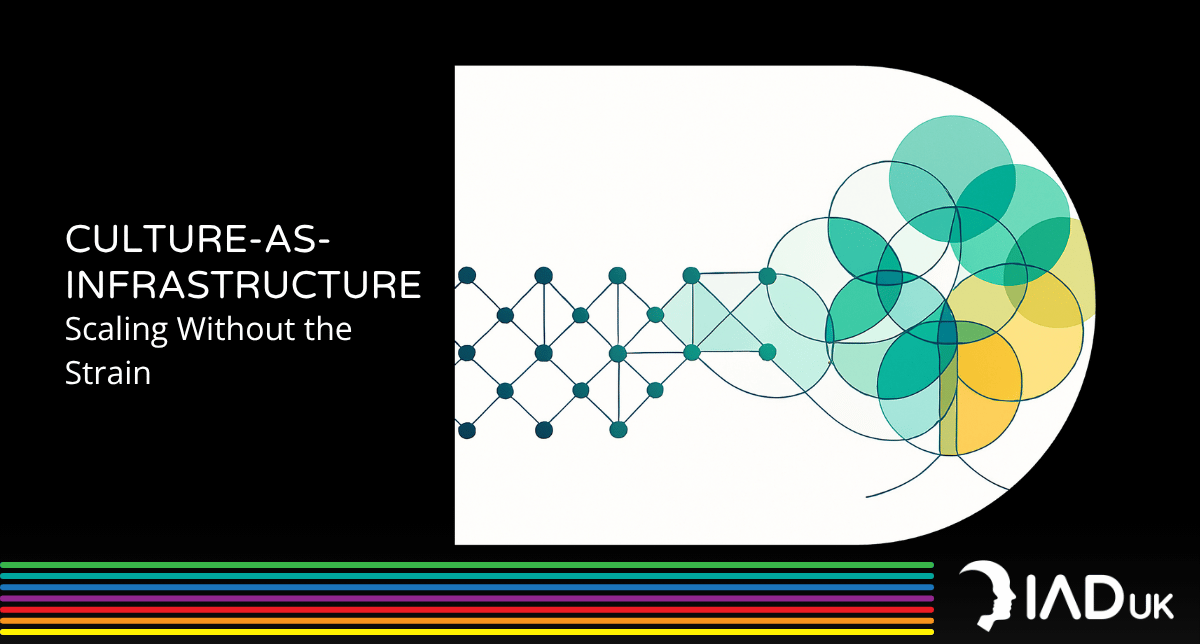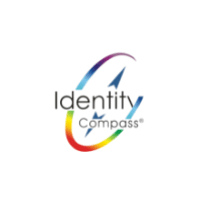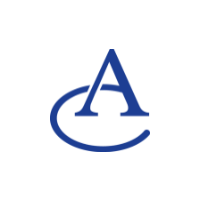Adaptive Leadership in a VUCA World
Developing Leaders Who Thrive Amidst Volatility, Uncertainty, Complexity, and Ambiguity

Volatility, Uncertainty, Complexity, and Ambiguity (VUCA) has become the norm in today's rapidly evolving business world. This is true for all businesses, but especially for those in fast-paced industries, have complex input-output relationships, or are scaling. For HR Leaders this means developing business leaders who can manage through environments where change is constant, outcomes are unpredictable, and decisions have to be made with incomplete information.
Traditional leadership models, with their rigid structures and predictable processes, often fall short in VUCA environments. They struggle to accommodate the need for flexibility and rapid response to change. This is where adaptive leadership becomes crucial.
Increased Dynamic Intelligence empowers leaders to think complexly and adaptively. By enhancing Awareness of Cognitive Intentions, and developing Choice in their thinking and Response, the Dynamic Intelligence Development System™ (DIDS™), equips leaders to thrive not just survive in VUCA settings. This article will explore how HR leaders can leverage DIDS™ to develop adaptive, resilient leaders, turning volatility into a strategic advantage.
The Need for Adaptive Leadership
Traditional leadership models often rely on well-established processes, clear hierarchies, and predictable decision-making frameworks. While effective in stable environments, these approaches falter in the face of VUCA. Leaders accustomed to relying on past experiences or rigid strategies may find themselves overwhelmed by the sheer pace and unpredictability of change. In a world where ambiguity reigns, sticking to what "used to work" can lead to missed opportunities and stalled growth.
Adaptive leadership, on the other hand, thrives in chaos. Adaptive leaders embody flexibility, resilience, and proactive problem-solving—qualities that enable them to navigate uncertainty with confidence. They pivot when necessary, embracing change rather than resisting it. This doesn’t mean abandoning structure altogether; rather, it’s about developing the Cognitive Dynamic Intelligence (CDI) to recognise when a new approach is needed and the Emotional Dynamic Intelligence (EDI) to guide teams through uncharted territory.
The Dynamic Intelligence Development System (DIDS™) plays a pivotal role here. By enhancing a leader's Dynamic Intelligence, it sharpens their Awareness of Cognitive Intentions and thinking biases, enabling more nuanced and flexible thinking. This cognitive flexibility underpins an adaptive leader's ability to remain composed and responsive amidst uncertainty. Imagine a leadership team that doesn’t just react to change but anticipates and leverages it—how much more could your organisation achieve with that kind of capability?
Introduction to the Dynamic Intelligence Development System™
The Dynamic Intelligence Development System™ (DIDS™) offers a powerful framework for enhancing adaptive leadership through increased Dynamic Intelligence. Rooted in Constructed Development Theory (CDT), DIDS™ emphasises increasing Thinking Complexity by helping leaders become more aware of their Cognitive Intentions—the mental shortcuts that drive our problem-solving and decision-making strategies. By expanding this Awareness, leaders gain Choice in their thinking and the ability to navigate a wider range of Responses to the unpredictable situations characteristic of VUCA environments.
At the heart of DI are four core components: Intention, Awareness, Choice, and Response.
Intention refers to the automatic thinking patterns that shape how we perceive and respond to our environment. In leadership, Intention represents the default cognitive responses that often guide initial reactions without conscious choice.
Awareness is the recognition of these unconscious patterns and understanding their impact on our decisions. For leaders, developing Awareness allows them to identify biases and initial reactions, paving the way for more deliberate decision-making.
Choice is the deliberate selection of cognitive strategies based on Awareness and Intention. In a leadership context, it enables leaders to adapt their responses, choosing the most appropriate course of action in different situations.
Response is the action that results from the combination of Intention, Awareness, and Choice. Leaders with high Dynamic Intelligence can tailor their responses to be more effective, ensuring they are contextually appropriate and strategically sound.
This cycle of Intention, Awareness, Choice, and Response equips leaders with the cognitive and emotional agility needed to thrive in VUCA environments. It allows them to remain calm amidst chaos, pivot strategies as necessary, and guide their teams through complexity. So, how does DI actually enhance leaders’ decision-making agility in practice? Let's explore this further in the next section.
Thriving in Volatility
Enhancing Leaders' Decision-Making Agility
Volatility is the hallmark of the VUCA world, marked by sudden, unpredictable changes that can catch even the most prepared organisations off guard. Market shifts, technological disruptions, and geopolitical events can all wreak havoc on business operations. For leaders, this means that decision-making cannot rely on a playbook of tried-and-tested methods. Instead, leaders need the agility to make swift, informed decisions, often with incomplete information. How can leaders develop this kind of agility?
This is where Dynamic Intelligence (DI) becomes a game-changer. DI enhances leaders' Awareness of their own and others’ Cognitive Intentions, allowing them to recognise the thinking patterns and biases that influence decision-making. With greater Awareness, leaders can consciously choose the most effective Cognitive Intentions for the situation at hand. For example, in a volatile market shift, a leader with high DI can quickly shift from a Detail-oriented focus to a Global perspective, identifying the broader implications of the change. This flexibility in thinking enables them to make decisions that are both rapid and well-considered.
Additionally, the ability to understand others’ Cognitive Intentions allows leaders to anticipate and influence team responses more effectively, fostering a collective agility in navigating volatility. When leaders are not just reacting to changes but strategically guiding their teams through them, the organisation becomes more resilient.
So, how can HR leaders develop this agility within their leadership programs? Here are some actionable approaches:
Dialectical Thinking Training: Develop leaders’ ability to challenge assumptions and synthesise multiple perspectives before making decisions. This practice builds the habit of Intentional Choice in cognitive processing.
Scenario Planning: Incorporate scenario planning exercises that simulate volatile situations. This helps leaders practice shifting their Cognitive Intentions to match the demands of different scenarios, enhancing their decision-making agility.
Real-Time Problem-Solving Workshops: Use workshops where leaders must solve problems in real-time with incomplete information. This fosters quick thinking and the ability to pivot strategies as new information emerges.
By embedding these strategies into leadership development programs, HR leaders can cultivate decision-making agility that turns volatility into a strategic advantage. But how does this agility contribute to building resilience and confidence in the face of uncertainty?
Navigating Uncertainty
Building Leaders' Resilience and Confidence
Uncertainty is an inherent part of the VUCA landscape, where the future remains an enigma due to a lack of information or rapidly shifting variables. Unlike volatility, which often involves sudden changes, uncertainty presents a more subtle challenge: the inability to predict outcomes or even identify what might influence them. This ambiguity can paralyse decision-making and erode confidence if leaders aren’t equipped to handle the unknown.
Dynamic Intelligence (DI) offers a pathway to resilience in the face of uncertainty. By cultivating a Thinking Style characterised by curiosity and openness, DI helps leaders approach the unknown with a mentality of exploration rather than fear. Leaders with enhanced DI recognise that they don’t need to have all the answers upfront. Instead, they become skilled at asking the right questions and are prepared to adapt as new information emerges. This shift in Thinking Style fosters resilience, enabling leaders to remain grounded and composed even when outcomes are unclear.
Moreover, DI encourages a sense of preparedness for the unknown. Leaders learn to view uncertainty as an opportunity for growth and innovation, rather than a threat. This positive framing not only bolsters individual resilience but also instills confidence in the teams they lead, creating an organisational culture that is better equipped to navigate ambiguity.
How can HR leaders nurture this resilience in their leadership programs? Consider these approaches:
Improvisation Training: Introduce leaders to improvisational exercises that require them to make decisions on the fly with limited information. This fosters a comfort with uncertainty and hones their ability to think on their feet.
Reflective Practices: Encourage leaders to regularly reflect on their experiences and the decisions they've made in uncertain contexts. Reflection builds self-awareness and helps leaders learn from past situations, increasing their confidence in handling future uncertainties.
Adaptive Challenges: Incorporate real-world adaptive challenges into development programs where leaders must solve complex problems without clear solutions. This experience reinforces the mindset that resilience comes from embracing uncertainty and adapting through intentional learning.
By embedding these practices into leadership development, HR leaders can cultivate a cadre of leaders who not only withstand uncertainty but use it as a catalyst for growth. But what happens when the ambiguity deepens, and complexity becomes the primary challenge? That’s where systems thinking and innovation come into play, as we will explore next.
Embracing Complexity
Developing Systems Thinking and Innovation
Complexity in a VUCA world stems from the intricate web of interconnected variables where cause and effect are not easily discernible. In complex environments, small changes can have far-reaching and often unpredictable impacts, making traditional linear thinking inadequate. For leaders, navigating this landscape requires a shift toward systems thinking—an ability to see the bigger picture, understand interdependencies, and anticipate unintended consequences.
Dynamic Intelligence (DI) plays a crucial role in cultivating this systemic perspective. With enhanced DI, leaders can step back from immediate concerns and examine the broader context. They develop the cognitive capacity to recognise patterns and relationships among seemingly disparate elements. This expanded Awareness enables leaders to identify leverage points within a system—those critical areas where targeted interventions can produce significant, positive outcomes. By thinking systemically, leaders can navigate complexity with a more strategic and holistic approach, rather than getting lost in the minutiae.
Additionally, DI fosters an innovative mindset by encouraging leaders to view complex challenges as opportunities for creative problem-solving. Instead of being overwhelmed by the multitude of variables, leaders with high DI are more likely to explore unconventional solutions and experiment with new approaches. This agility in thinking not only enhances their ability to manage complexity but also drives innovation within their teams and organisations.
So, how can HR leaders help develop systems thinking and innovation within their leadership programs? Here are some approaches you might consider:
Systems Thinking Workshops: Facilitate workshops that teach leaders the principles of systems thinking. Use real-world case studies to help them practice identifying interdependencies and leverage points within complex scenarios.
Cross-Functional Team Projects: Encourage leaders to participate in cross-functional team projects that require collaboration across different departments. This exposure to diverse perspectives helps leaders understand how various parts of the organisation interact and influence each other.
Problem-Mapping Exercises: Incorporate problem-mapping exercises into development programs where leaders deconstruct complex problems by visualising the relationships between different elements. This practice enhances their ability to see the broader system and identify innovative solutions.
By embedding these strategies into leadership development, HR leaders can foster a systems-thinking mindset that equips leaders to not only manage complexity but also drive innovation. Yet, as complexity increases, so does ambiguity. How can leaders cultivate clarity and creativity in the face of ambiguity?
Tackling Ambiguity
Cultivating Clarity and Creative Problem-Solving
Ambiguity is the most elusive element of VUCA, representing situations where information is unclear, incomplete, or even contradictory. Unlike volatility, where changes are apparent, or uncertainty, where the future is unknown, ambiguity obscures the nature of the problem itself. Leaders are often left questioning the validity of the information they have and are challenged to make decisions without a clear understanding of the potential outcomes. This complexity can lead to analysis paralysis, where leaders hesitate to act due to the fear of making the wrong choice.
Enhanced Dynamic Intelligence (DI) equips leaders to navigate ambiguity with greater clarity and confidence. Leaders with high DI are adept at creative problem-solving, viewing ambiguity not as an obstacle but as an opportunity to innovate. Instead of searching for a single “correct” answer, they explore multiple possibilities, considering various angles and perspectives. This mindset fosters an environment where ambiguity is embraced, and diverse ideas are encouraged.
DI also sharpens leaders’ ability to make decisions with limited information. By honing their Awareness and Choice, leaders can assess ambiguous situations more objectively and choose the most effective Cognitive Intentions to address them. For example, they might adopt an Abstract Thinking Style to conceptualise overarching themes or a Realisation Success Strategy to focus on actionable steps. This flexibility allows leaders to move forward with confidence, even when the path is not entirely clear.
To help leaders cultivate these skills, HR leaders can integrate the following strategies into their leadership programs:
Creative Thinking Exercises: Introduce exercises that encourage divergent thinking and brainstorming. Activities like “What if” scenarios and mind mapping can help leaders break free from conventional thought patterns and generate innovative solutions in ambiguous situations.
Ambiguity Training: Incorporate training sessions that expose leaders to ambiguous situations. Use role-playing or case studies to simulate real-world scenarios where information is unclear or contradictory, helping leaders practice decision-making in uncertain contexts.
Decision-Making Frameworks: Provide leaders with structured frameworks such as the Cynefin framework, which helps categorise problems based on their level of ambiguity and complexity. These tools guide leaders in selecting the most appropriate decision-making approach for different scenarios.
By embedding these practices into leadership development, HR leaders can empower their teams to navigate ambiguity with clarity and creativity. As leaders become more adept at handling ambiguous situations, they develop the confidence to act decisively, turning uncertainty into a space for innovation and growth. Now, how can you start incorporating Dynamic Intelligence principles into your leadership programs to make this shift a reality? Let's dive into some practical strategies next.
Additional Strategies for Incorporating DI into Leadership Programs
Integrating Dynamic Intelligence (DI) principles into leadership development is essential for preparing leaders to thrive in a VUCA world. HR leaders can start by embedding DI concepts into existing leadership programs, focusing on enhancing self-awareness, cognitive flexibility, and decision-making skills. This involves not just theoretical learning but also practical application, where leaders can practice using DI in real-world scenarios.
Key Developmental Tools play a critical role in this integration:
Cognitive Assessments: Begin with cognitive assessments that help leaders identify their Cognitive Intentions and biases. Tools like the Identity Compass ® can provide insights into leaders' Thinking Styles, helping them understand how their default patterns influence their decisions.
DI-Focused Workshops: Organise workshops centred around DI principles, where leaders engage in exercises designed to enhance their Intention, Awareness, Choice, and Response. These sessions can include role-playing, scenario analysis, and problem-solving exercises tailored to VUCA contexts.
Real-Time Feed-Forward Mechanisms: Incorporate real-time feedback loops where leaders receive constructive input on their decision-making processes. This immediate feed-forward helps them refine their Cognitive Intentions and responses on the go, fostering agility and continuous improvement.
Personalised Next Level Coaching: Offer one-on-one developmental coaching sessions that focus on enhancing DI. A Developmentalist can guide leaders in raising their Awareness of their Cognitive Intentions, expanding their Choice of Responses, and improving their adaptability in complex situations.
Beyond individual development, HR leaders should foster a culture of adaptability within the organisation. Encourage an environment where continuous learning, flexibility, and innovation are valued. Promote a mentality that views challenges as opportunities for growth, and where leaders at all levels are empowered to experiment, reflect, and learn from their experiences.
By integrating DI principles into leadership programs and nurturing a culture that values adaptability, HR leaders can build a resilient organisation ready to navigate the uncertainties of the future. Speaking of the future, how can these efforts prepare your organisation to face what lies ahead with confidence and agility?
Preparing for the Future
As the business landscape continues to evolve, the ability to thrive in a VUCA world hinges on developing adaptive leaders equipped with Dynamic Intelligence (DI). By enhancing leaders' Awareness of their Cognitive Intentions, expanding their thinking complexity, and fostering agility in decision-making, DI empowers leaders to navigate volatility, uncertainty, complexity, and ambiguity with confidence and resilience. From turning volatility into strategic agility to leveraging ambiguity for creative problem-solving, DI transforms the challenges of VUCA into opportunities for growth and innovation.
Now is the time for HR leaders to take action. Integrate DI development into your leadership programs to build a cadre of leaders ready to lead your organisation into the future. By embedding DI principles and fostering a culture of adaptability, you create an environment where continuous development and flexible thinking are not just encouraged but expected. This investment in leadership development will not only prepare your organisation to face the uncertainties ahead but will also position it to seize the opportunities that come with change. The future is uncertain, but with DI, your leaders can construct it.
If you would like to discuss how we can help your organisation to thrive in VUCA environment, please get in touch.
Alternatively, you can read more about the IAD's approach to developing adaptive leadership




